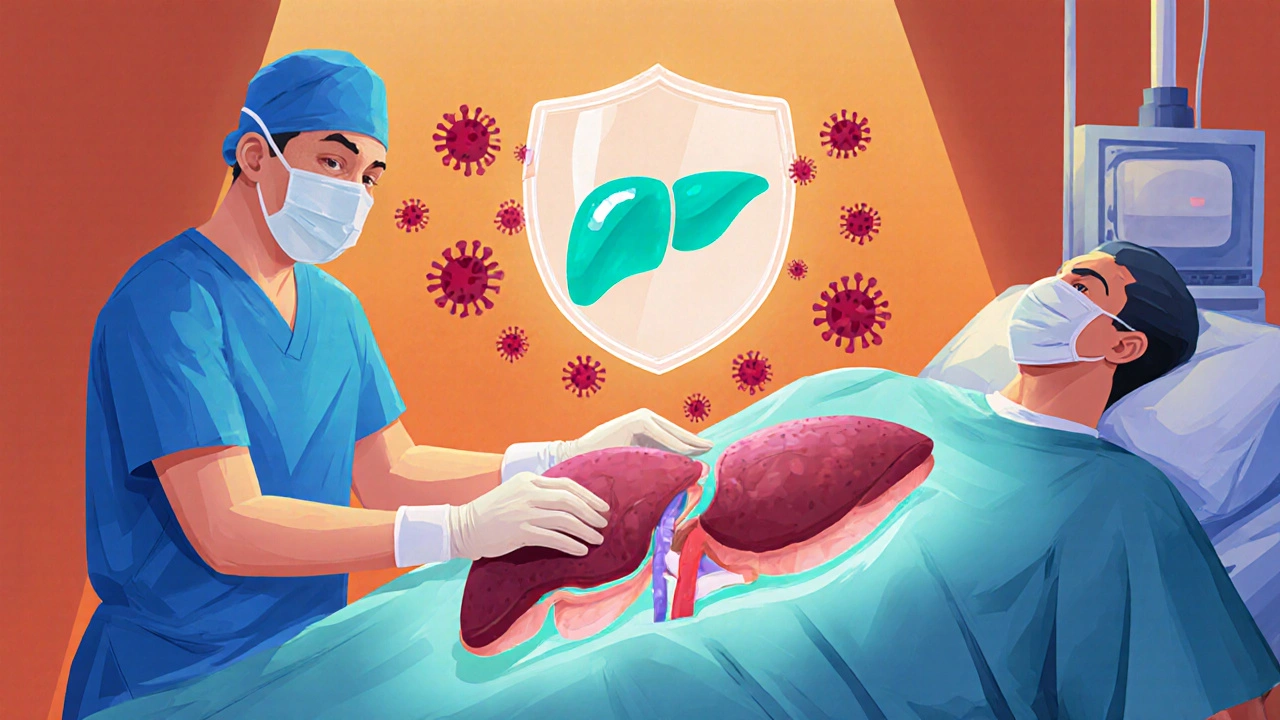Explore how velpatasvir works, its safety, dosing, and clinical evidence for treating hepatitis C in liver‑transplant patients, plus a practical checklist and FAQs.
Hepatitis C: Causes, Treatments, and What You Need to Know
When you hear hepatitis C, a viral infection that attacks the liver and can lead to serious, long-term damage. Also known as HCV, it's not just another cold—it's a silent threat that can quietly scar your liver for years before you feel anything. Unlike hepatitis A, which usually clears on its own, hepatitis C often becomes chronic. About 75% to 85% of people infected develop a long-term infection, and many don’t know they have it until liver damage shows up on a test.
It spreads through blood—to-blood contact. That means sharing needles, unsterile tattoos, or even old medical equipment in places with poor sanitation. It’s not spread by kissing, hugging, or sharing food. The biggest risk? People born between 1945 and 1965—baby boomers—are five times more likely to have it, and most don’t know. The CDC recommends everyone in that group get tested at least once. If you’ve ever had a blood transfusion before 1992, or used intravenous drugs even once, you should get checked too.
Thankfully, hepatitis C treatment, modern direct-acting antiviral drugs that cure over 95% of cases has changed everything. Gone are the days of interferon shots and brutal side effects. Today’s pills—like sofosbuvir, ledipasvir, or glecaprevir—are taken for just 8 to 12 weeks, have almost no side effects, and work even if you’ve had the virus for decades. The catch? You need to be diagnosed first. Left untreated, hepatitis C can lead to cirrhosis, liver cancer, or liver failure. But with early treatment, the liver can often heal itself.
And it’s not just about the virus. Your liver is also affected by what you drink, eat, and how you live. Alcohol makes hepatitis C worse—fast. Obesity and diabetes can speed up scarring. That’s why treatment isn’t just pills—it’s lifestyle too. Cutting back on alcohol, managing blood sugar, and avoiding unnecessary meds (like some painkillers) all help your liver recover.
You’ll find real, no-fluff advice here on how these treatments work, who they’re for, what they cost, and how to avoid scams selling fake cures. We cover the latest meds, what to expect during treatment, how to test yourself safely, and what happens after you’re cured. No jargon. No hype. Just what you need to know to protect your liver—and your future.

